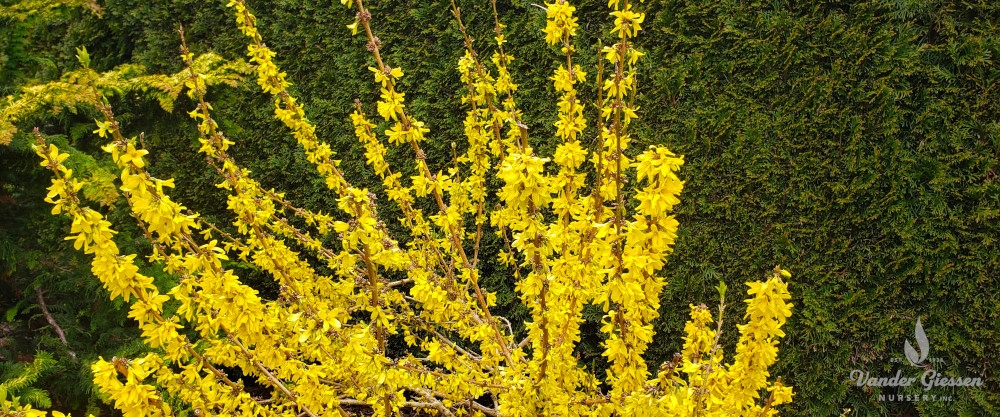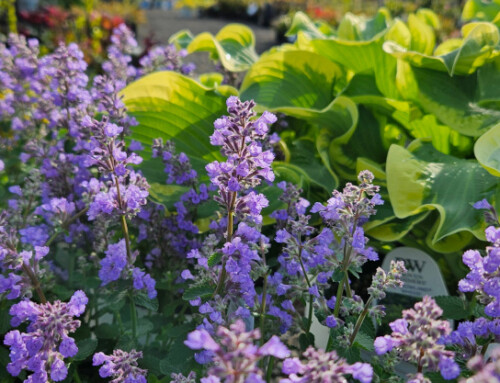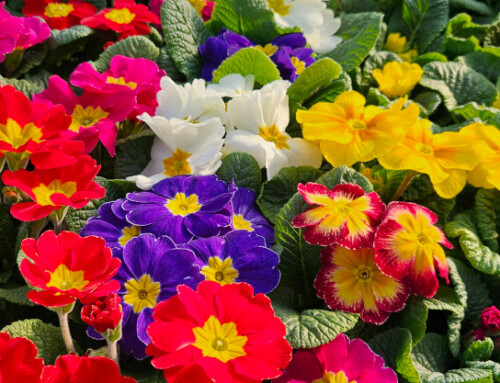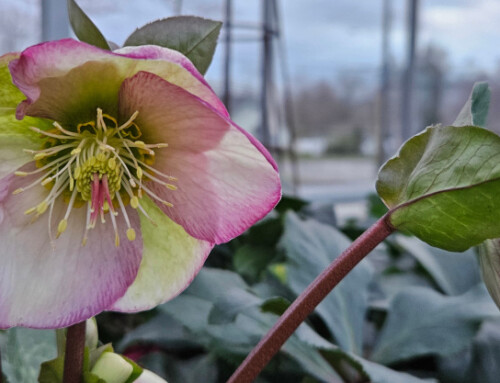Charles Dickens once wrote of sunny March days as “summer in the light and winter in the shade.” With the promise of sunny, warmer weather arriving in the coming days, the chilly late winter we’ve been experiencing lately may begin to shift to real spring, when even the shade isn’t so wintry. As we gardeners excitedly get outside to feel the sun on our skin and work the soil in the coming weeks, here are a few tasks to accomplish around the yard and garden.
First, March is an important month for lawn care. After a winter’s rest, your lawn has already started waking up for spring, and with longer days and 60-degree weather in the forecast, it will begin to grow in earnest very soon. If you’re like most of us, though, your lawn could use some serious attention, with moss taking over shady areas and thin or totally worn-through patches where pets or people walked regularly throughout the winter.
Start your spring lawn rehabilitation by treating the moss with Bonide MossMax or generic ferrous sulfate—both products will kill moss quickly and have a nice side effect of turning grass dark green. Follow up the moss killer a week later with a dose of Espoma Lightning Lime to raise the soil pH, which prevents moss regrowth and allows your lawn to take up the fertilizer you apply throughout the season. Finally, a week after the lime application, feed your lawn with Scotts Turf Builder with Moss Control, an ideal early-spring fertilizer for Pacific Northwest lawns.
For thin, patchy, or totally bare spots in your lawn, you’ll need to overseed those areas, but hold off yet—even with sunny, warmer days in the forecast, ground temperatures aren’t warm enough to facilitate seed germination. For any lawn seeding projects, hold off until April when the ground is warmer.
Meanwhile, late March or early April is an excellent time to apply Bonide Crabgrass Plus, a preemergent weed killer which prevents crabgrass, poa annua, and most broadleaf weeds in your lawn this spring and summer. Apply it to grass heavy with morning dew and let it sit for 24 hours after application before watering it in for best results. I use this product on my lawn every year, and while some grassy weeds still elude my efforts, I enjoy a mostly weed-free lawn until at least mid-summer before I have to start spraying the occasional weed that sprouts.
Once you’ve started your lawn care regimen for spring, it’s time to have some fun. Although the single-digit temperatures we experienced in January may have killed or badly damaged some of the plants in your yard, most gardeners will readily admit it’s exciting to “have to” plant something new in the yard. Hydrangeas are always a good option to consider, and with dozens of varieties available today, it can be a challenge just to decide which variety to plant.
Although hydrangeas have always been hardy enough to survive our Pacific Northwest winters, many of the older varieties won’t bloom following a harsh winter—the buds they develop in late summer and autumn each year can freeze and die in a brisk northeaster. For that reason, most of today’s newer introductions are rebloomers, meaning they bloom on both last year’s growth and this year’s new growth, ensuring that regardless the winter cold, you’ll be guaranteed blooms each summer.
As breeders have introduced more cold-hardy hydrangea varieties, they’ve also focused on breeding dwarf plants that need minimal pruning to stay tidy and compact. A couple of my favorite newer varieties are ‘Cherry-Go-Round,’ with rich cherry-red blooms and deep green foliage, and ‘Starfield,’ with pink or blue flowers shaped like small stars within each flower head. Both varieties grow to just two to three feet tall and wide and bloom with fresh flowers from early summer through early fall. Check out these two newer varieties–along with dozens of other great options–at Vander Giessen’s this spring.
Finally, take the time this month to feed the established plants around your yard. I rely mainly on two fertilizers: an acid-based plant food like Espoma Azalea-Tone for my rhododendrons, azaleas, pieris, and evergreens; and Jack’s Classicote, an all-purpose time release fertilizer for most of the rest of my plants. Although there are plenty of other specialty fertilizers formulated for individual types of plants—we can advise on the best plant food for your specific needs when you come and visit the nursery—these two fertilizers will feed a wide variety of the plants most common in your yard.
With the golden-yellow blooms of forsythia beginning to light up the landscape around Whatcom County, you can be sure that the explosion of color and life that is spring is sure to arrive in all its glory very soon. While you get started working around the yard, enjoy the warmth of the sun on your face and the feel of dirt under your fingernails once again.








Leave A Comment